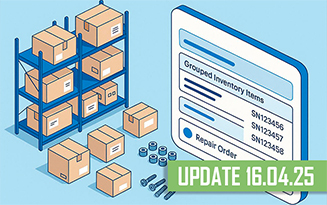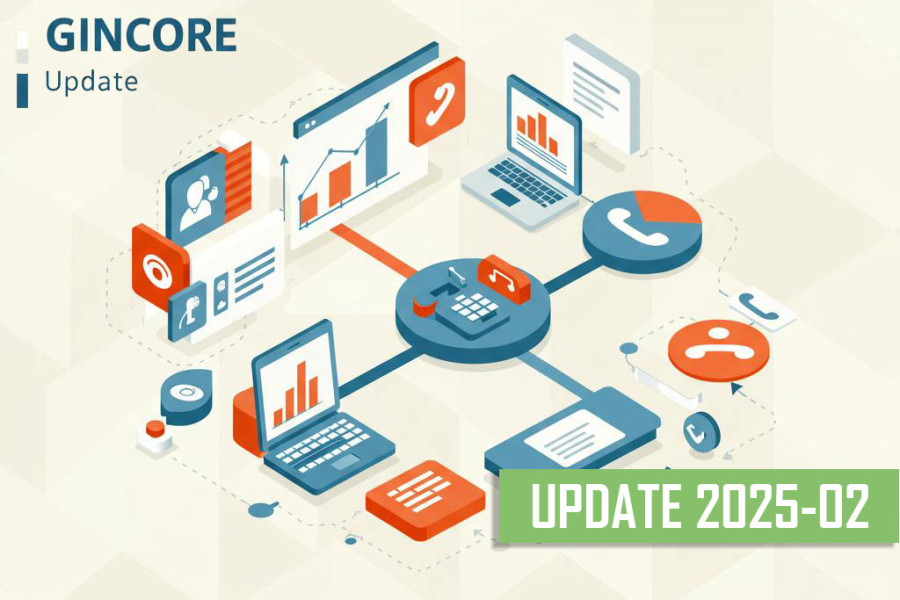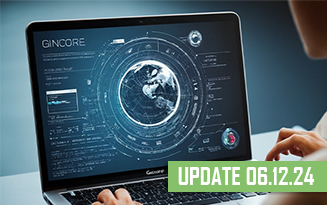Every day, your sales managers call clients. But why do some easily close deals while others lose customers?
- The voice is confident, but there are no sales.
- Clients say "I'll think about it" and then vanish.
- Objections confuse the conversation, causing the deal to fall apart.
The problem? A lack of a clear call structure.
A successful call isn’t accidental—it’s a system. When the conversation follows the right script, the client naturally arrives at the decision to buy.
In this article, you’ll learn:
- 5 key stages of a call that lead to a deal.
- How to handle objections so the client doesn’t walk away.
- Why even skilled sales managers lose customers—and how to fix it.
Why Do Clients Walk Away Mid-Call?
The sales manager is talking with a client. Everything seems to be going well. But then, suddenly, the client loses interest, says "Thank you, I'll think about it", and disappears. What went wrong?
Most calls fail for one reason—a lack of structure.
When a call lacks structure, the manager loses control. They either talk too much or fail to ask the right questions, leaving the client feeling like they’re just being sold to—and so they hang up.
Facts That Will Surprise You
– 70% of clients decline not because they’re uninterested, but because the manager fails to communicate the offer’s value.
– Chaotic calls convert at half the rate of structured ones.
– 80% of deals are lost during the objection-handling stage.
Case Study: How to Lose a Client in 30 Seconds
❌ Manager (Without Structure):
- "Hello, did you leave an inquiry?"
- "Our product is the best on the market; it has numerous features..."
- "Well, if you want to think it over, give us a call back..."
✅ Manager (With Structure):
- "Hello, John! Could you tell me what’s most important to you when choosing [product/service]?"
- "Understood. Look, our product addresses exactly that need..."
- "Let’s discuss the details at a time that works for you."
The difference is clear. In the first scenario, the manager rambles and loses the client. In the second, they engage in dialogue and guide the client toward a decision.
What’s Next?
For a call to be effective, it must have a solid structure. In the next section, we’ll break down the 5 stages of the perfect call and demonstrate how to lead a client to purchase. 🚀
5 Key Stages of the Perfect Call
Chaotic calls just don’t work. Successful calls aren’t a matter of luck—they follow a precise script. Without structure, the manager loses control, the client loses interest, and the company loses money.
A call equals a script. Here are the 5 stages that make it effective.
1. Establishing Connection
First impressions matter. If the manager sounds unsure or monotonous, the client loses interest within the first 5 seconds.
- Mistake: "Hello, did you leave an inquiry?" (monotone, emotionless voice).
- Correct Approach: "Hello, John! My name is Alex, calling from Company X. Thank you for reaching out! How’s your day going?"
The key is to build trust and set a friendly tone. When the client feels at ease, they’re open to conversation.
2. Priming the Client for Dialogue
The manager must take the initiative. If the client takes control, the call turns chaotic.
- Mistake: "How can I help you?" (leaving the conversation entirely to the client).
- Correct Approach: "Let’s do this: I’ll ask you a few questions to understand what matters most to you, and then I’ll explain how we can help. Sound good?"
This technique—known as "priming"—positions the manager as the lead in the conversation.
3. Identifying Needs (Client Diagnosis)
A common mistake made by 90% of sales managers is to start talking about the product immediately. It’s like a doctor prescribing treatment without diagnosing the patient.
- Mistake: "We have an excellent product that..."
- Correct Approach: "What is most important to you when choosing a [product/service]? What challenges are you looking to overcome?"
The manager should ask open-ended questions. This helps uncover what the client truly needs.
4. Presenting the Solution (Speak Only in Benefits)
Clients don’t buy features—they buy solutions to their problems.
- Mistake: "Our product boasts 10 features..." (which doesn’t resonate with the client).
- Correct Approach: "You mentioned that X is important to you. Here’s how our product addresses that..."
The formula for an effective presentation:
Connect the product to the client’s needs.
Demonstrate the solution with concrete examples.
Avoid jargon—keep it simple.
5. Closing the Deal (The Logical Step to Purchase)
The biggest mistake is being afraid to ask the client to make a decision.
- Mistake: "Well, think about it..." (too passive).
- Correct Approach: "Let’s place the order. Would you prefer to pay upfront or on an installment plan?"
The close should be a natural conclusion to the conversation, not a pressure tactic.
What’s Next?
These 5 stages form the backbone of every call. When followed, they ensure that the manager doesn’t lose the client and guides them toward a purchase.
Yet, even with a perfect structure, 80% of clients still raise objections. How do you handle that effectively? We’ll cover that in the next section! 🚀
How to Overcome Any Client Objections and Seal the Deal
Clients rarely say "Yes, I'll buy it!" right away. In fact, 80% of deals pass through an objection phase.
What does that mean? The client isn’t saying "no"—they’re simply hesitant. And when you address their concerns properly, hesitation turns into agreement.
Objections are an opportunity to close the deal, not a reason to give up. Let’s break down exactly how to handle them.
1. How to Differentiate Between False and Genuine Objections
📌 Fact: Clients rarely reveal their true reason for declining.
There are two types of objections:
- Genuine – the client is truly concerned about price, quality, or delivery timelines. They want the product, but there’s an issue.
- False – the client simply declines without providing a reason, saying things like "I’ll think about it" or "I need to consult...".
How do you tell the difference?
Here’s a simple test:
- If the client says "I'm not ready", it’s likely a false objection.
- If the client says "It’s expensive because...", it’s a genuine concern.
How do you tackle false objections?
When a client says:
- "I need to think about it"
You respond:
- "I understand. In my 5 years in sales, I’ve noticed that when a client says 'I’ll think about it,' something is holding them back. Can you tell me honestly what concerns you?"
In 90% of cases, the client will open up with the truth.
2. The "Fire Localization" Method – Address All Objections at Once
A common mistake is trying to tackle each objection individually. The client will continue to pile them on until you’re exhausted.
The right approach? Identify all objections upfront, then address them together.
Example:
- Client: "It’s expensive."
- You: "Besides the price, is there anything else holding you back?"
- Client: "I'm also unclear about the warranty..."
- You: "If both the price and warranty work for you, can we agree to move forward?"
The client will lay out all their concerns at once, allowing you to address them systematically.
Top 3 Objections and How to Overcome Them
1. "It’s Expensive"
- Mistake: – "Well, our product is high-quality..." (which doesn’t resonate with the client).
- Correct Approach: – "I understand your concern. Price is important. What are you comparing it to?"
Often, the client isn’t comparing it to anything—they simply don’t see the value. Your task is to highlight the benefits.
The response formula:
- Acknowledge: "Price is an important factor, I understand."
- Clarify criteria: "Are you considering a cheaper alternative? What exactly concerns you about the price?"
- Demonstrate value: "This product saves you 100 hours of work per year, meaning it pays for itself in just three months."
📌 Fact: People are willing to pay when they understand the value.
2. "I Need to Think About It"
- Mistake: – "Alright, take your time" (90% of clients never come back).
- Correct Approach: – "Great, that means you’re interested! What specifically is causing your hesitation?"
The client will either reveal the true reason or offer excuses. If the concern is genuine, address it directly. If not, use the fire localization method.
3. "I'll Look at Other Options"
- Mistake: – "Okay, good luck".
- Correct Approach: – "Of course! What are the most important factors for you when choosing?"
The client will begin discussing their criteria. Then, you:
- Identify what is truly valuable to them.
- Show how your product meets these criteria better than competitors.
📌 Fact: 80% of clients won’t continue comparing if they immediately see the value.
The key principle – always align with the client.
📌 Fact: Selling isn’t about arguing—it’s about reaching agreement.
Rule #1: Agree first, then address the objection.
Example:
- Mistake: – "No, it's not expensive!"
- Correct Approach: – "Yes, I understand that price is important. Let me explain what’s included in that cost..."
The client is less likely to argue if they feel you’re on their side.
Conclusion: Handling objections is the key to successful sales
🔥 Objections are not rejections—they’re signals that the client is interested but has concerns.
🔥 Address those concerns, and the client will buy.
🔥 Use techniques such as fire localization, identifying genuine objections, and agreement.
But… how do you know which mistakes your managers are making most frequently?
📌 The next step is automated call analysis. It will reveal where you’re losing clients. 🚀
How Does Automated Call Analysis Help Prevent Mistakes?
Your sales managers call clients every day. But why do some close deals effortlessly while others lose clients?
The problem is that no one monitors call quality.
Managers don’t hear their own mistakes, and supervisors can’t manually review every call recording. The result? Repeated failures, lost clients, and declining conversion rates.
The solution? Automated call analysis.
What Mistakes Can Be Uncovered Through Call Analysis?
📌 Fact: In 90% of cases, managers lose clients at the same stage.
What are the most common mistakes?
- The manager talks too much—failing to let the client speak and overwhelming them with information.
- Lack of a call structure—the client becomes confused and doesn’t understand where the conversation is headed.
- Fails to identify the client’s needs—simply talking about the product instead of solving the client’s problem.
- Poor objection handling—losing the client at the first sign of hesitation.
- Does not close the deal—failing to guide the conversation to a natural conclusion or make an offer.
If these mistakes aren’t identified, they will recur every day.
How Does Automated Call Analysis Work?
📌 Fact: 80% of sales improvements occur after identifying errors in conversations.
Manual review of call recordings is time-consuming and inefficient.
But now, technology can automatically analyze calls and provide recommendations.
How does it work?
- An AI analyzes each call—examining tone, structure, and speech pace.
- Identifies key mistakes—such as when the manager interrupted the client or missed crucial questions.
- Provides personalized recommendations—what to improve and which phrases to use instead of ineffective ones.
- Highlights problematic stages—indicating at what point in the call clients are most likely to drop off.
The manager receives a report with specific actions for improvement.
The supervisor gains insight into who is performing well and who needs additional training.
Which Metrics Are Crucial for Evaluating Calls?
📌 Fact: Top managers use clear metrics to evaluate their calls.
To gauge call effectiveness, it’s important to track key metrics:
- Percentage of successful calls—how many calls result in a deal.
- Share of calls with proper structure—how well the manager adheres to the script.
- Average call duration—calls that are too short may indicate lack of engagement, while overly long calls suggest excessive talking.
- Percentage of objections handled—how many rejections the manager successfully turns into a deal.
Automation helps evaluate calls based on these criteria rather than just listening to recordings.
★ How Does Gincore Help Analyze Calls?
Gincore is a tool that:
- Automatically analyzes call recordings.
- Identifies mistakes and weaknesses in sales managers’ performance.
- Provides personalized recommendations for improving conversations.
- Helps supervisors see who is delivering results and who is losing clients.
The result? Better call quality, higher conversion rates, and more sales.
Why Do Companies That Don’t Analyze Calls Lose Money?
📌 Fact: Without call analysis, companies can lose up to 50% of potential deals.
Companies that do not monitor call quality:
- Don’t understand why clients decline.
- Are unaware of the mistakes their managers make.
- Waste money on advertising because leads are lost during calls.
Companies that use automated call analysis:
- Identify issues and can resolve them.
- Improve call-to-deal conversion rates.
- Enhance overall customer service quality.
What’s Next?
Calls are the cornerstone of sales.
If their quality isn’t monitored, the business loses money.
Want to know where your managers are losing clients?
Try Gincore and get a complete call analysis today! 🚀
Try Gincore for AI-Driven Call Monitoring
Your sales managers make dozens of calls each day. But how many clients are they losing?
Without monitoring, mistakes repeat.
Without analysis, you don’t know where the problem lies.
Without automation, you’re wasting time.
The market is changing. Clients are now more discerning and won’t tolerate long, unstructured calls. If your managers aren’t communicating effectively, deals are lost.
Gincore solves this problem.
- Analyzes calls automatically.
- Identifies managerial mistakes.
- Provides clear recommendations for improvement.
- Helps close more deals.
You’ve already invested in advertising and client acquisition. Don’t lose them over poor calls!
📌 Try Gincore right now and discover how many clients you’re losing due to poor call quality.
🚀 Start analyzing calls – boost your sales!

.png)


